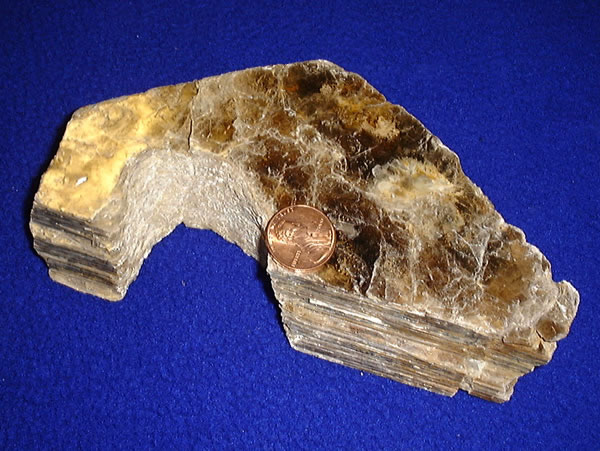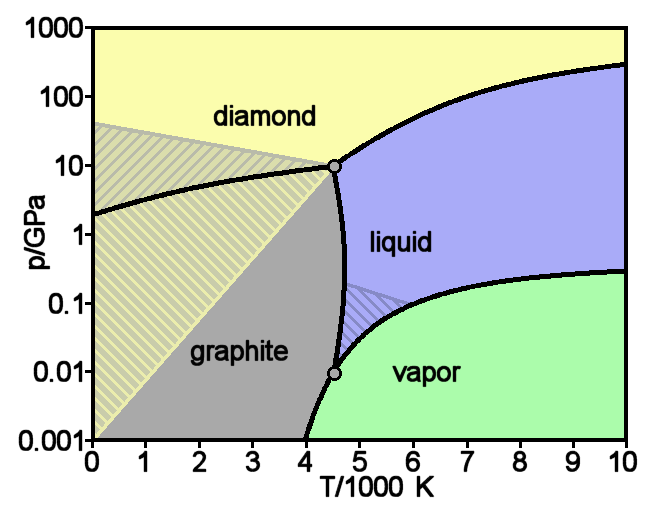|
Bismuth Strontium Calcium Copper Oxide
Bismuth strontium calcium copper oxide (BSCCO, pronounced ''bisko''), is a type of cuprate superconductor having the generalized chemical formula Bi2 Sr2 Ca''n''−1 Cu''n'' O2''n''+4+''x'', with ''n'' = 2 being the most commonly studied compound (though ''n'' = 1 and ''n'' = 3 have also received significant attention). Discovered as a general class in 1988, BSCCO was the first high-temperature superconductor which did not contain a rare-earth element. It is a cuprate superconductor, an important category of high-temperature superconductors sharing a two-dimensional layered (perovskite) structure (see figure at right) with superconductivity taking place in a copper-oxide plane. BSCCO and YBCO are the most studied cuprate superconductors. Specific types of BSCCO are usually referred to using the sequence of the numbers of the metallic ions. Thus Bi-2201 is the ''n'' = 1 compound ( Bi2 Sr2 Cu O6+''x''), Bi-2212 is the ''n'' = 2 compound ( Bi2 Sr2 C ... [...More Info...] [...Related Items...] OR: [Wikipedia] [Google] [Baidu] |
Barium
Barium is a chemical element with the symbol Ba and atomic number 56. It is the fifth element in group 2 and is a soft, silvery alkaline earth metal. Because of its high chemical reactivity, barium is never found in nature as a free element. The most common minerals of barium are baryte (barium sulfate, BaSO4) and witherite ( barium carbonate, BaCO3). The name ''barium'' originates from the alchemical derivative "baryta", from Greek (), meaning 'heavy'. ''Baric'' is the adjectival form of barium. Barium was identified as a new element in 1774, but not reduced to a metal until 1808 with the advent of electrolysis. Barium has few industrial applications. Historically, it was used as a getter for vacuum tubes and in oxide form as the emissive coating on indirectly heated cathodes. It is a component of YBCO ( high-temperature superconductors) and electroceramics, and is added to steel and cast iron to reduce the size of carbon grains within the microstructure. Barium compou ... [...More Info...] [...Related Items...] OR: [Wikipedia] [Google] [Baidu] |
Upper Critical Field
For a given temperature, the critical field refers to the maximum magnetic field strength below which a material remains superconducting. Superconductivity is characterized both by perfect conductivity (zero resistance) and by the complete expulsion of magnetic fields (the Meissner effect). Changes in either temperature or magnetic flux density can cause the phase transition between normal and superconducting states.High Temperature Superconductivity, Jeffrey W. Lynn Editor, Springer-Verlag (1990) The highest temperature under which the superconducting state is seen is known as the critical temperature. At that temperature even the weakest external magnetic field will destroy the superconducting state, so the strength of the critical field is zero. As temperature decreases, the critical field increases generally to a maximum at absolute zero. For a type-I superconductor the discontinuity in heat capacity seen at the superconducting transition is generally related to the slope of the ... [...More Info...] [...Related Items...] OR: [Wikipedia] [Google] [Baidu] |
Type-II Superconductor
In superconductivity, a type-II superconductor is a superconductor that exhibits an intermediate phase of mixed ordinary and superconducting properties at intermediate temperature and fields above the superconducting phases. It also features the formation of magnetic field vortices with an applied external magnetic field. This occurs above a certain critical field strength ''Hc1''. The vortex density increases with increasing field strength. At a higher critical field ''Hc2'', superconductivity is destroyed. Type-II superconductors do not exhibit a complete Meissner effect. History In 1935, Rjabinin and Shubnikov experimentally discovered the Type-II superconductors. In 1950, the theory of the two types of superconductors was further developed by Lev Landau and Vitaly Ginzburg in their paper on Ginzburg–Landau theory. In their argument, a type-I superconductor had positive free energy of the superconductor-normal metal boundary. Ginzburg and Landau pointed out the possibil ... [...More Info...] [...Related Items...] OR: [Wikipedia] [Google] [Baidu] |
Mas Subramanian
Mas Subramanian, (born 1954), is a solid-state materials scientist at Oregon State University in Corvallis, Oregon. He is a University Distinguished Professor and the Milton Harris Chair of Materials Science in the university's Department of Chemistry. His work in solid-state chemistry on structure-property relationships of inorganic compounds has led to several breakthrough discoveries of novel functional materials, many of which have found usage in various applications. Subramanian has authored 400 research publications and holds 60 patents. His publications have received more than 30,000 citations (h-index: 75). Early life and education Subramanian was born and raised in Chennai, India. Subramanian received his B.S. in chemistry from the University of Madras, in 1975 and received a M.S. in inorganic chemistry from the same university in 1977. Subramanian's master's thesis featured analysis of various minerals and alloy compounds. In 1982 Mas completed his Ph.D. in soli ... [...More Info...] [...Related Items...] OR: [Wikipedia] [Google] [Baidu] |
CERN
The European Organization for Nuclear Research, known as CERN (; ; ), is an intergovernmental organization that operates the largest particle physics laboratory in the world. Established in 1954, it is based in a northwestern suburb of Geneva, on the France–Switzerland border. It comprises 23 member states, and Israel (admitted in 2013) is currently the only non-European country holding full membership. CERN is an official United Nations General Assembly observer. The acronym CERN is also used to refer to the laboratory; in 2019, it had 2,660 scientific, technical, and administrative staff members, and hosted about 12,400 users from institutions in more than 70 countries. In 2016, CERN generated 49 petabytes of data. CERN's main function is to provide the particle accelerators and other infrastructure needed for high-energy physics research — consequently, numerous experiments have been constructed at CERN through international collaborations. CERN is the site o ... [...More Info...] [...Related Items...] OR: [Wikipedia] [Google] [Baidu] |
Holbrook Superconductor Project
The Holbrook Superconductor Project is the world's first production superconducting transmission power cable. The lines were commissioned in 2008. The suburban Long Island electrical substation is fed by a 600 meter long tunnel containing approximately 155,000 meters of high-temperature superconductor wire manufactured by American Superconductor, installed underground and chilled to superconducting temperature with liquid nitrogen. Project The project was funded by the United States Department of Energy, and operates as part of the Long Island Power Authority (LIPA) power grid. The project team comprised American Superconductor, Nexans, Air Liquide and LIPA. It broke ground on July 4, 2006, was first energized April 22, 2008, and was commissioned on June 25, 2008.https://digital.library.unt.edu/ark:/67531/metadc842743/m2/1/high_res_d/1046827.pdf Between commissioning and March 2009 refrigeration events impacted normal operation. The superconductor is bismuth strontium calcium ... [...More Info...] [...Related Items...] OR: [Wikipedia] [Google] [Baidu] |
Current Density
In electromagnetism, current density is the amount of charge per unit time that flows through a unit area of a chosen cross section. The current density vector is defined as a vector whose magnitude is the electric current per cross-sectional area at a given point in space, its direction being that of the motion of the positive charges at this point. In SI base units, the electric current density is measured in amperes per square metre. Definition Assume that ''A'' (SI unit: m2) is a small surface centred at a given point ''M'' and orthogonal to the motion of the charges at ''M''. If ''I'' (SI unit: A) is the electric current flowing through ''A'', then electric current density ''j'' at ''M'' is given by the limit: :j = \lim_ \frac = \left.\frac \_, with surface ''A'' remaining centered at ''M'' and orthogonal to the motion of the charges during the limit process. The current density vector j is the vector whose magnitude is the electric current density, and whose direct ... [...More Info...] [...Related Items...] OR: [Wikipedia] [Google] [Baidu] |
Yttrium Barium Copper Oxide
Yttrium barium copper oxide (YBCO) is a family of crystalline chemical compounds that display high-temperature superconductivity; it includes the first material ever discovered to become superconducting above the boiling point of liquid nitrogen (77 K) at about 93 K. Many YBCO compounds have the general formula Y Ba2 Cu3 O7−''x'' (also known as Y123), although materials with other Y:Ba:Cu ratios exist, such as Y Ba2 Cu4 Oy (Y124) or Y2 Ba4 Cu7 Oy (Y247). At present, there is no singularly recognised theory for high-temperature superconductivity. It is part of the more general group of rare-earth barium copper oxides (ReBCO) in which, instead of yttrium, other rare earths are present. History In April 1986, Georg Bednorz and Karl Müller, working at IBM in Zurich, discovered that certain semiconducting oxides became superconducting at relatively high temperature, in particular, a lanthanum barium copper oxide becomes superconducting at 35 K. This oxide was an oxyg ... [...More Info...] [...Related Items...] OR: [Wikipedia] [Google] [Baidu] |
Mica
Micas ( ) are a group of silicate minerals whose outstanding physical characteristic is that individual mica crystals can easily be split into extremely thin elastic plates. This characteristic is described as perfect basal cleavage. Mica is common in igneous and metamorphic rock and is occasionally found as small flakes in sedimentary rock. It is particularly prominent in many granites, pegmatites, and schists, and "books" (large individual crystals) of mica several feet across have been found in some pegmatites. Micas are used in products such as drywalls, paints, fillers, especially in parts for automobiles, roofing and shingles, as well as in electronics. The mineral is used in cosmetics and food to add "shimmer" or "frost." Properties and structure The mica group is composed of 37 phyllosilicate minerals. All crystallize in the monoclinic system, with a tendency towards pseudohexagonal crystals, and are similar in structure but vary in chemical composition. Mic ... [...More Info...] [...Related Items...] OR: [Wikipedia] [Google] [Baidu] |
Graphite
Graphite () is a crystalline form of the element carbon. It consists of stacked layers of graphene. Graphite occurs naturally and is the most stable form of carbon under standard conditions. Synthetic and natural graphite are consumed on large scale (300 kton/year, in 1989) for uses in pencils, lubricants, and electrodes. Under high pressures and temperatures it converts to diamond. It is a weak conductor of heat and electricity. Types and varieties Natural graphite The principal types of natural graphite, each occurring in different types of ore deposits, are * Crystalline small flakes of graphite (or flake graphite) occurs as isolated, flat, plate-like particles with hexagonal edges if unbroken. When broken the edges can be irregular or angular; * Amorphous graphite: very fine flake graphite is sometimes called amorphous; * Lump graphite (or vein graphite) occurs in fissure veins or fractures and appears as massive platy intergrowths of fibrous or acicular cry ... [...More Info...] [...Related Items...] OR: [Wikipedia] [Google] [Baidu] |





